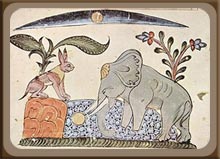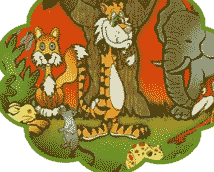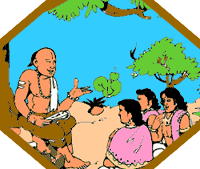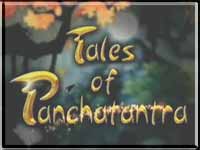INTRODUCTION
The Panchatantra is a legendary collection of originally Indian animal fables in verse and prose. Some scholars believe that the original text of the Panchatantra in Sanskrit was probably written in the 3rd century BCE by a great Hindu scholar, Pandit Vishnu Sharma. However, it is based on older oral tradition, its origin going back to the period of the Rig-Veda and Upanishads (from 1500 B.C. to 500 B.C.). According to some scholars of the Indo-European languages, the Panchatantra is the oldest collection of Indian fables surviving. According to To quote Edgerton (1924), It is "certainly the most frequently translated literary product of India". And these stories are among the most widely known in the world.
Mitra Bheda (Enstrangement of Friends): This tantra gives a deep understanding of how good friends can be lost. The stories mention how opponents or enemies can create many situations due to which good friends can be lost, and help the enemy become stronger and achieve its goal.
Mitra Samprapti (Winning of Friends): This tantra gives insight into how lost friends can be gained back or new friends made. It also teaches how people or friends with mutual interest can join together to achieve a common goal and come out of difficult situations.
Kakolukiyam (Of Crows & Owls): This tantra teaches how misunderstanding between enemy can be created using decite and duplicity, to weaken their unity. In the story crows and owls are portrayed as the opponent parties and how the crows finally destroyed the oppressing owls. This tantra is also known as - Suhrudbheda or "Causing Dissension Between Friends".
Labdha Pranasam (Loss of Gains): This tantra gives an insight into how gains made earlier can be lost if proper care is not taken or the consequences not analysed.
Aparikshita Karakam (Rash Deeds): This tantra teaches about consequences of taking action in haste without knowing the details or the truth.
PURPOSE

However the stories hold valid credit in showing the mankind in general the ways to understand people, to choose reliable and trustworthy friends, to meet difficulties and solve problems with tact and wisdom, and to live in peace and harmony in the face of hypocrisy, deceit and many pitfalls of life.
POPULARITY

SPREAD OF PANCHTANTRA
In course of time, travelers took these stories to countries like Persia, Arabia, Greece and Europe. Different versions of the Panchatantra was believed to be composed first in the Pahlavi language of pre-Islamic Iran sometime in the 6th century A.D, followed by an Arabic one in the 8th century A.D. The Greek translation was made towards the close of the 11th century A.D, from which it was translated into various European languages. This accounts for the fact that to many Westerners, some of the stories have a familiar feel. So far it has been translated into more than 50 languages worldwide. The gypsies played a laudable part in spreading these tales in Europe.ABOUT THE AUTHOR



